Calligraton is a live performance that emerges from the collaboration of the duo Schnitt and Japanese calligrapher Aoi Yamaguchi. The project is developed on two apparently distant forms of expression, experimental sound composition and
Japanese calligraphy "shodō".
Shodō: is the art of Japanese calligraphy, which literally means "way of writing". This ancient art form expressed with the creation of Japanese characters, a simple word, an aphorism, a short personal reflection, a poem, goes beyond the simple
transmission of meaning by reflecting the spirit of the writer. With a brush on paper, a path is traced that flows from the writer’s inner self, where characters (kanji) and writer become one, representing the calligrapher’s state of mind at the moment of
execution.
Schnitt and Aoi Yamaguchi explore in Calligraton the relationship between sound and writing, rhythms, balances, full and empty spaces, sounds and silences confront each other on stage, discovering a profound affinity between sound and sign. The
electronic/digital compositional gesture relates to the calligraphic gesture in an intimate conversation that explores the interconnection between the human gesture and the technological element.
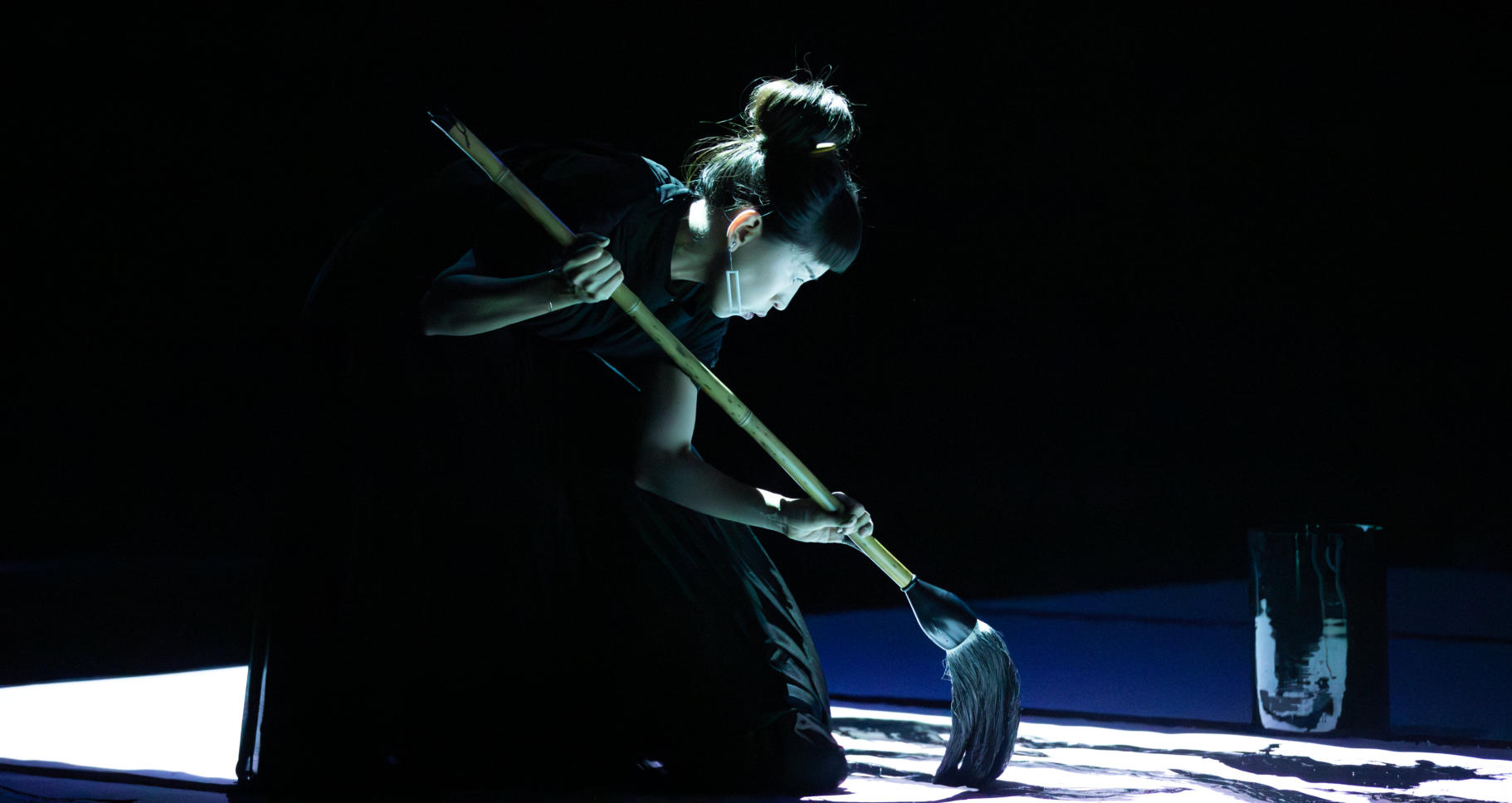
Body / Gesture / Action
Shodō is an art of movement, a dance for those who practice it and for those who observe it: gesture, rhythm, speed/slowness, strength, elegance.
“The line on the paper, which we see with our eyes, is only a part of the movement that is not seen. But it is this invisible movement in the void that supports and brings to life the line that we can see”
J.K. Kadowaki
Japanese
calligraphy
requires
coordination
and
mastery
of
the
body,
posture,
breathing
and
use
of
the
brush
(fude).
Each
line
and
curve
is
performed
in
a
sort
of
dance
with
movements
that
involve
the
entire
body
creating
a
direct
connection
between
the
body
and
the
paper.
Practicing
shodō
requires
physical
discipline
that
develops
over
time.
Beyond
the
constant
repetition
of
strokes
to
improve
technique,
the
calligrapher
must
learn
to
control
muscle
tension
and
find
a
balance
between
relaxation and strength. This repetition helps strengthen the connection between body and mind, turning the practice into a sort of physical exercise.
The
relationship
between
body
and
shodō
goes
beyond
mere
technical
execution.
It
is
a
dialogue
between
the
artist's
interiority
and
the
exterior,
where
the
body
becomes
the
means
to
express
the
soul
through
the
brush
and
ink.
In
this
way,
body,
mind and spirit merge in a creative act that is as physical as it is spiritual.
Sound:
In Calligraton the electronic sonorities developed by Schnitt align with the thoughts of the Japanese composer Toshio Hosokawa:
My
music
is
calligraphy
painted
on
the
free
margin
of
time
and
space.
Every
single
sound
has
a
shape
like
a
line
or
a
dot,
drawn
with
the
brush.
These
lines
are
painted
on
the
canvas
of
silence.
The
margin
of
which,
the
canvas
of
silence,
must
be
considered as important as audible sounds.
Connecting
with
an
art
form
totally
devoid
of
technology,
rarefied,
dense
and
compact
sounds
reveal
analogies
with
the
sign
left
by
the
brush,
decisive
or
uncertain,
fast
or
slow,
thin
or
thick
signs.
The
rhythm
of
the
sound
composition
overlaps
with
the rhythm of writing, sound and writing step back from the attention to create space for a continuous exchange that defines the development of the entire performance.
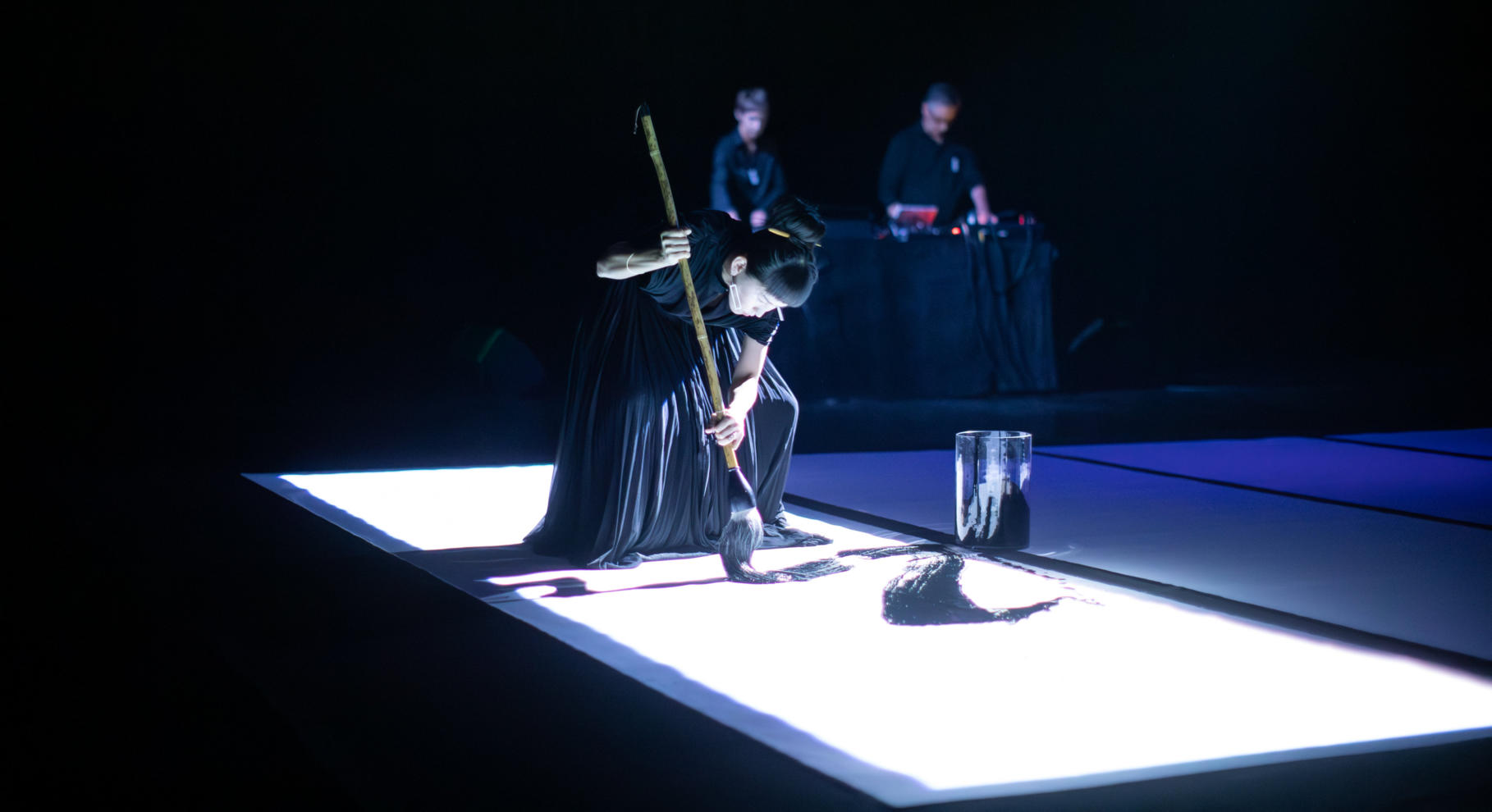
Across five acts, calligraphy and audiovisual choreography intertwine, transforming the space into an immersive dialogue of light, sound, and gesture.
The project CALLIGRATON has been developed thanks to the support of Asia-Europe Foundation (ASEF) and premiered at Asia-Europe Cultural Festival (AECFest) in Singapore in October 2025.
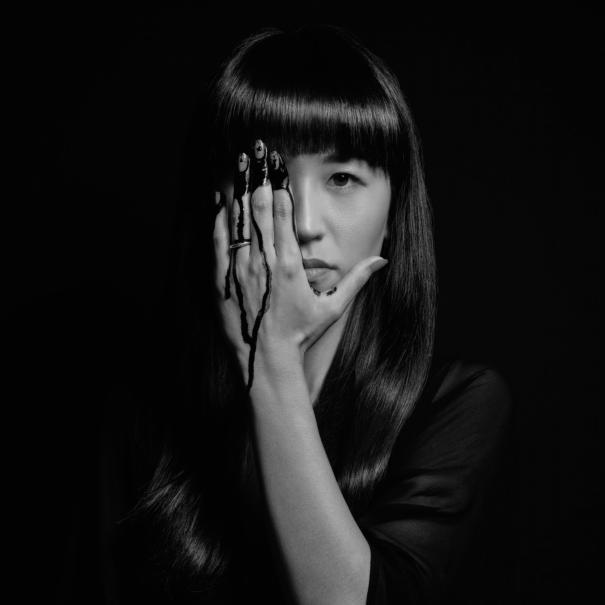
Schnitt
Schnitt
is
the
project
of
Amelie
Duchow,
a
german
experimental
musician
and
Marco
Monfardini,
italian
media
artist.
The
duo
works
at
the
intersection
of
electronic
music,
art
and
technology,
with
a
strong
focus
on
the
cohesion
between audio and video.
Audio/video performances:
Schnitt
develops
the
projects
SYNCHROPATH
(2010)
an
audio/video
performance
based
on
synchronism
as
a
method of composition, MEMORY CODE (2016) an audio/video performance focused on visual memory,
SCANAUDIENCE
(2019),
site-specific
audio/video
performance
developed
in
collaboration
with
Gianluca
Sibaldi
based on real-time audience scanning.
WHITE
BALANCE
(2022)
audio/video
performance
based
on
the
interaction
between
audio/video
and
the
photographic white balance process.
The
projects
have
been
presented
at
international
festivals,
museums,
European
and
Asian
art
centers.
Philharmonie
de
Paris/Biennale
Nèmo
France,
Mutek
Montreal,
LEV
Festival
Spain,
ACT
Festival
South
Korea,
Elektra
Festival
Canada, ePhil Germany.
Installations:
MEMORY
CAM
1.0
(Reutlingen,
Germany,
2012),
Architettura
Attuale
GROWING
BY
NUMBERS
(Milan
2011),
THE
IRRATIONAL
CITY
(Stazione
Santa
Lucia,
Venice
2013),
and
with
Gianluca
Sibaldi
SCANSCAPE
(ACC,
Asia Culture Center, Gwangju 2023)
In
collaboration
with
Gianluca
Sibaldi,
SCHNITT
created
the
interdisciplinary
platform
EXTRAsync
in
2017,
a
project
focused on audio-visual research. EXTRAsync develops site-specific projects, software and audio/video devices.
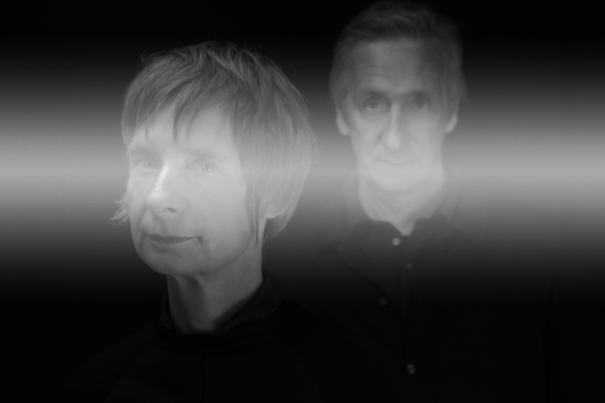
Aoi Yamaguchi
Born
and
raised
in
Hokkaido,
Japan,
Aoi
Yamaguchi
has
been
trained
to
master
the
basics
of
calligraphy
by
learning
under the Master Zuiho Sato since at the age of 6, while refining her knowledge and skills.
She
is
a
recipient
of
numerous
awards
including
the
First
Place
prize
from
the
Minister
of
Education
at
44th
Asahi
Calligraphy
Nationwide
School
Exhibit,
Superior
First
Place
at
33rd
National
Students
Calligraphy
Exhibition
and
others that are known as the supreme prizes at competitive public exhibitions.
As
a
noteworthy
event,
she
was
nominated
to
participate
in
the
group,
4th
Hokkaido
Elementary
and
Junior
High
Students
Visit
to
China
in
2000,
representing
the
country
of
Japan
and
participated
in
calligraphy
exchange
sessions
at Palace of Pupils of China.
Since
landed
in
the
U.S.
in
2004,
she
has
performed
and
exhibited
her
works
in
many
theaters,
museums,
galleries,
universities
and
festivals
in
the
United
States,
across
Europe,
and
Japan.
Her
works
show
her
exploration
in
juxtaposing
the
traditional
Eastern
classics
and
her
contemporary
artistic
expressions,
as
well
as
her
unique
ambition
of
transforming
two-dimensional
art
of
Japanese
Calligraphy
into
the
art
of
physical
expression
through
performances.
Currently
residing
in
Venice,
California,
Yamaguchi
continues
her
work
on
her
conceptual
calligraphy
installations,
exhibitions,
and
performances
as
she
continues
to
push
the
boundaries
of
traditional
Eastern
classics
and
contemporary artistic expression.
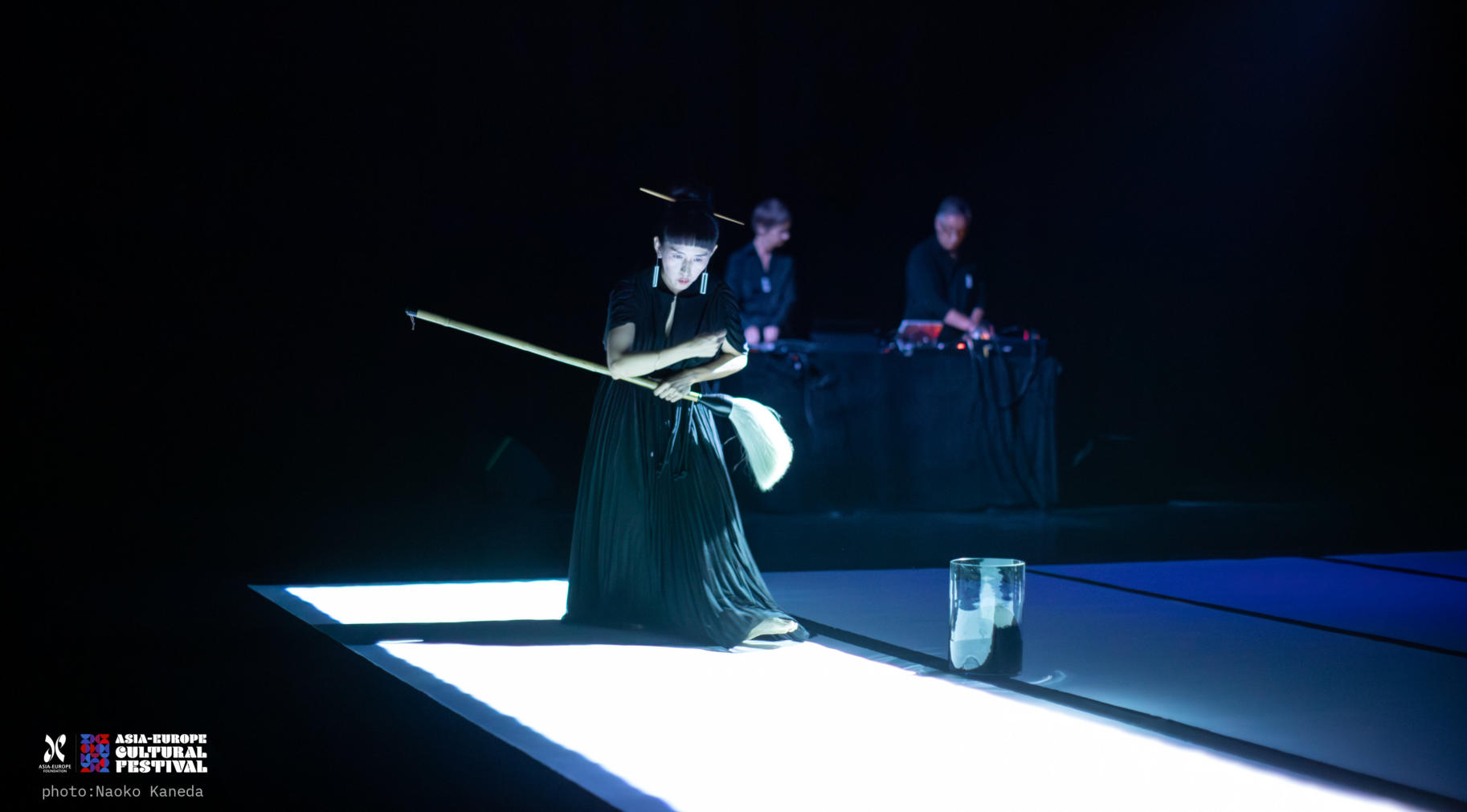
C A L L I G R A T O N live performance
artists : Schnitt (Amelie Duchow - Marco Monfardini)
Aoi Yamaguchi
concept and music : Amelie Duchow and Marco Monfardini
caligrapher : Aoi Yamaguchi
production : sync | EXTRAsync
photo : Naoko Kaneda
with the support of: Asia-Europe Cultural Festival (AECFest)


www.schnitt.it
www.aoiyamaguchi.com
www.site-sync.com
www.extrasync.net
contact :
info@extrasync.nett


Calligraton is a live performance that emerges from the collaboration
of the duo Schnitt and Japanese calligrapher Aoi Yamaguchi. The
project is developed on two apparently distant forms of expression,
experimental sound composition and Japanese calligraphy "shodō".
Shodō: is the art of Japanese calligraphy, which literally means "way
of writing". This ancient art form expressed with the creation of
Japanese characters, a simple word, an aphorism, a short personal
reflection, a poem, goes beyond the simple transmission of meaning
by reflecting the spirit of the writer. With a brush on paper, a path is
traced that flows from the writer’s inner self, where characters (kanji)
and writer become one, representing the calligrapher’s state of mind
at the moment of execution.
Schnitt and Aoi Yamaguchi explore in Calligraton the relationship
between sound and writing, rhythms, balances, full and empty
spaces, sounds and silences confront each other on stage,
discovering a profound affinity between sound and sign. The
electronic/digital compositional gesture relates to the calligraphic
gesture in an intimate conversation that explores the interconnection
between the human gesture and the technological element.
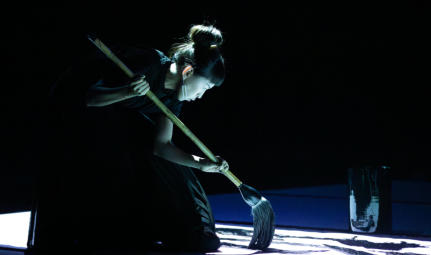
Body / Gesture / Action
Shodō
is
an
art
of
movement,
a
dance
for
those
who
practice
it
and
for
those
who
observe
it:
gesture,
rhythm,
speed/slowness,
strength,
elegance.
“The
line
on
the
paper,
which
we
see
with
our
eyes,
is
only
a
part
of
the
movement
that
is
not
seen.
But
it
is
this
invisible
movement
in
the
void
that
supports
and
brings
to
life
the
line
that
we
can
see”
J.K.
Kadowaki
Japanese
calligraphy
requires
coordination
and
mastery
of
the
body,
posture,
breathing
and
use
of
the
brush
(fude).
Each
line
and
curve
is
performed
in
a
sort
of
dance
with
movements
that
involve
the
entire
body
creating
a
direct
connection
between
the
body
and
the
paper.
Practicing
shodō
requires
physical
discipline
that
develops
over
time.
Beyond
the
constant
repetition
of
strokes
to
improve
technique,
the
calligrapher
must
learn
to
control
muscle
tension
and
find
a
balance
between
relaxation
and
strength.
This
repetition
helps
strengthen
the
connection
between
body
and
mind,
turning
the
practice
into
a
sort
of
physical exercise.
The
relationship
between
body
and
shodō
goes
beyond
mere
technical
execution.
It
is
a
dialogue
between
the
artist's
interiority
and
the
exterior,
where
the
body
becomes
the
means
to
express
the
soul
through
the
brush
and
ink.
In
this
way,
body,
mind
and
spirit
merge
in
a creative act that is as physical as it is spiritual.


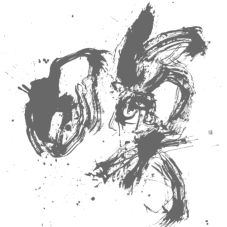
C A L L I G R A T O N
S C H N I T T | A O I Y A M A G U C H I




Sound:
In
Calligraton
the
electronic
sonorities
developed
by
Schnitt
align with the thoughts of the Japanese composer Toshio Hosokawa:
My
music
is
calligraphy
painted
on
the
free
margin
of
time
and
space.
Every
single
sound
has
a
shape
like
a
line
or
a
dot,
drawn
with
the
brush.
These
lines
are
painted
on
the
canvas
of
silence.
The
margin
of
which,
the
canvas
of
silence,
must
be
considered
as
important
as
audible sounds.
Connecting
with
an
art
form
totally
devoid
of
technology,
rarefied,
dense
and
compact
sounds
reveal
analogies
with
the
sign
left
by
the
brush,
decisive
or
uncertain,
fast
or
slow,
thin
or
thick
signs.
The
rhythm
of
the
sound
composition
overlaps
with
the
rhythm
of
writing,
sound
and
writing
step
back
from
the
attention
to
create
space
for
a
continuous
exchange
that
defines
the
development
of
the
entire
performance.
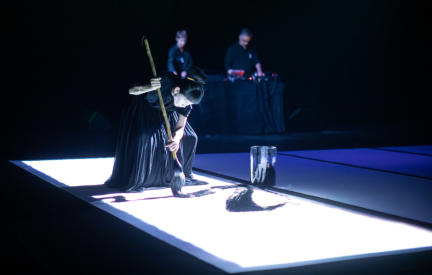
Across
five
acts,
calligraphy
and
audiovisual
choreography
intertwine,
transforming
the
space
into
an
immersive
dialogue
of
light,
sound, and gesture.
The
project
CALLIGRATON
has
been
supported
by
ASEF
Asia-
Europe
Foundation
and
premiered
at
Asia-Europe
Cultural
Festival
in
Singapore in October 2025.
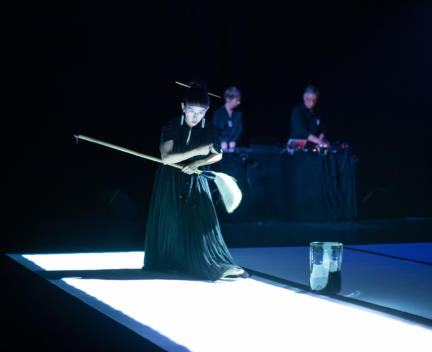
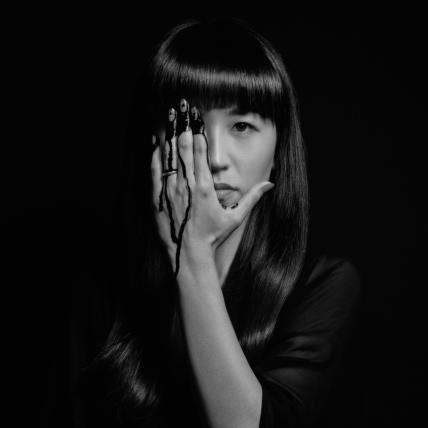
Schnitt
Schnitt
is
the
project
of
Amelie
Duchow,
a
german
experimental
musician
and
Marco
Monfardini,
italian
media
artist.
The
duo
works
at
the
intersection
of
electronic
music,
art
and
technology,
with
a
strong focus on the cohesion between audio and video.
Audio/video performances:
Schnitt
develops
the
projects
SYNCHROPATH
(2010)
an
audio/video
performance
based
on
synchronism
as
a
method
of
composition,
MEMORY
CODE
(2016)
an
audio/video
performance
focused
on
visual memory,
SCANAUDIENCE
(2019),
site-specific
audio/video
performance
developed
in
collaboration
with
Gianluca
Sibaldi
based
on
real-time
audience scanning.
WHITE
BALANCE
(2022)
audio/video
performance
based
on
the
interaction
between
audio/video
and
the
photographic
white
balance
process.
The
projects
have
been
presented
at
international
festivals,
museums,
European
and
Asian
art
centers.
Philharmonie
de
Paris/Biennale
Nèmo
France,
Mutek
Montreal,
LEV
Festival
Spain,
ACT Festival South Korea, Elektra Festival Canada, ePhil Germany.
Installations:
MEMORY
CAM
1.0
(Reutlingen,
Germany,
2012),
Architettura
Attuale
GROWING
BY
NUMBERS
(Milan
2011),
THE
IRRATIONAL
CITY
(Stazione
Santa
Lucia,
Venice
2013),
and
with
Gianluca
Sibaldi
SCANSCAPE
(ACC,
Asia
Culture
Center,
Gwangju
2023)
In
collaboration
with
Gianluca
Sibaldi,
SCHNITT
created
the
interdisciplinary
platform
EXTRAsync
in
2017,
a
project
focused
on
audio-visual
research.
EXTRAsync
develops
site-specific
projects,
software and audio/video devices.
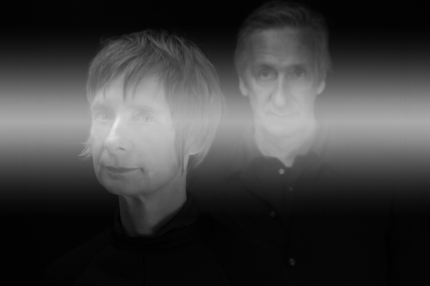
Aoi Yamaguchi
Born
and
raised
in
Hokkaido,
Japan,
Aoi
Yamaguchi
has
been
trained
to
master
the
basics
of
calligraphy
by
learning
under
the
Master
Zuiho
Sato
since
at
the
age
of
6,
while
refining
her
knowledge and skills.
She
is
a
recipient
of
numerous
awards
including
the
First
Place
prize
from
the
Minister
of
Education
at
44th
Asahi
Calligraphy
Nationwide
School
Exhibit,
Superior
First
Place
at
33rd
National
Students
Calligraphy
Exhibition
and
others
that
are
known
as
the
supreme
prizes at competitive public exhibitions.
As
a
noteworthy
event,
she
was
nominated
to
participate
in
the
group,
4th
Hokkaido
Elementary
and
Junior
High
Students
Visit
to
China
in
2000,
representing
the
country
of
Japan
and
participated
in
calligraphy exchange sessions at Palace of Pupils of China.
Since
landed
in
the
U.S.
in
2004,
she
has
performed
and
exhibited
her
works
in
many
theaters,
museums,
galleries,
universities
and
festivals
in
the
United
States,
across
Europe,
and
Japan.
Her
works
show
her
exploration
in
juxtaposing
the
traditional
Eastern
classics
and
her
contemporary
artistic
expressions,
as
well
as
her
unique
ambition
of
transforming
two-dimensional
art
of
Japanese
Calligraphy into the art of physical expression through performances.
Currently
residing
in
Venice,
California,
Yamaguchi
continues
her
work
on
her
conceptual
calligraphy
installations,
exhibitions,
and
performances
as
she
continues
to
push
the
boundaries
of
traditional
Eastern classics and contemporary artistic expression.
C A L L I G R A T O N live performance
artists : Schnitt (Amelie Duchow - Marco Monfardini)
Aoi Yamaguchi
concept and music : Amelie Duchow and Marco Monfardini
caligrapher : Aoi Yamaguchi
production : sync | EXTRAsync
photo : Naoko Kaneda
with the support of: Asia-Europe Cultural Festival (AECFest)


